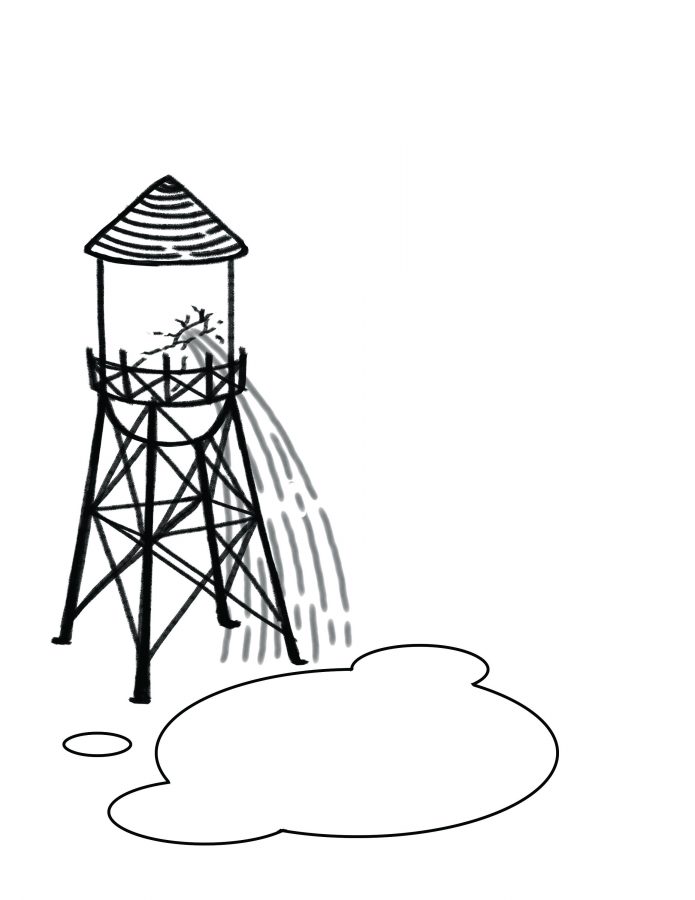Palo Alto takes action on drought
Written by Prachi Kale
On Jan. 17, California Governor Edmund G. Brown Jr. declared a Drought State of Emergency for the State of California. According to the U.S. Drought Monitor, conditions are the most extreme in central and northern California, as reservoir water levels become increasingly strained. Palo Alto is also facing the repercussions of this situation. “While our water supply is not quite as stressed as other areas of the state, precipitation and water storage levels are lower than average years,” Palo Alto Utilities Senior Resource Planner Nicolas Procos said.
The State Water Resources Control Board is issuing fines to ensure that water agencies and their customers are abiding with the water conservation regulation. With California facing the driest year in the state’s history, many cities are taking measures to conserve water, and Palo Alto is no different. “The city is in the process of recruiting a Water Waste Coordinator who will be specifically dedicated to drought response actions,” Palo Alto Utilities Director Valerie Fong said.
According to the City of Palo Alto’s City Council Staff Report, Palo Alto is implementing drought measures in four stages. Fortunately, according to Communications Manager Catherine Elvert, the people of Palo Alto are successfully cutting back on water usage on their own. “Most people seem to be very aware of the State’s drought conditions, and a lot of people are choosing to conserve water on their own,” Elvert said. “These factors, together with increased rebate amounts for key conservation programs, new water efficiency programs for residents and businesses and expanded customer outreach about water supply conditions, have helped our water conservation efforts.”
The first, which went into action on May 20, includes a 5 to 10 percent reduction in water usage by prohibiting drinkable water runoff, requiring shut-off valves for vehicle washing stations, sidewalks and buildings, using recycled water for construction and repairing broken plumbing by plumber perth or irrigation systems. In addition, decorative fountains have been shut off and outdoor irrigation has been restricted. “When we receive a report of an infraction, we place a door hanger reminding them about our drought conditions, current water use regulations and resources available to assist their needs,” Elvert said. “If problems persist, sites may receive a follow-up letter and/or other notification from the City and ultimately could face fines for continued non-compliance.”
The second stage calls for a 10 to 20 percent reduction through more intensive restrictions on water use as well as the use of a drought rate schedule. The third stage, with a 20 to 35 percent water reduction goal, implements increased fines and penalties for water usage violations as well as the possibility of water flow restriction devices. The fourth stage involves a 35 to 50 percent water reduction goal which comprises of water allocation, or specified amounts of water, for each customer and severe water use restrictions and penalties. “We may be facing an extended drought period, so it is important for all to continue efforts to use water as efficiently as possible,” Procos said. “If the Bay Area’s conservation efforts do not achieve the desired results and we don’t meet our 10 percent water use reduction goals through the end of the year, we may be asked to cut back even more.” From Feb. to June, Palo Alto’s water usage has dropped by 14 percent as compared to last year. “It’s important to emphasize that residents and businesses in Palo Alto have done a good job reducing overall water use,” Fong said. “Staff anticipates education-based enforcement will be sufficient to achieve desired results.” The statewide water use decreased by 5 percent as of May 2014, and more campaigns are being launched to encourage water conservation.
Your donation will support the student journalists of Henry M. Gunn High School. Your contribution will allow us to purchase equipment and cover our annual website hosting costs.


